How to Find the Perfect Hairstyle for Your Face Shape | The Ultimate Guide
Your Definitive Guide to Finding the Perfect Hairstyle for Your Face Shape
Have you ever walked out of a salon with a trendy new haircut, only to feel it just doesn't look right on you? The secret to a truly transformative haircut often lies not in the trend itself, but in how it complements your unique features. The most crucial factor in this equation is your face shape. Understanding your facial structure is the first step towards choosing a style that balances your proportions, highlights your best features, and makes you feel confident. This comprehensive guide will walk you through how to find the perfect hairstyle for your face shape, turning your next salon visit into a resounding success.
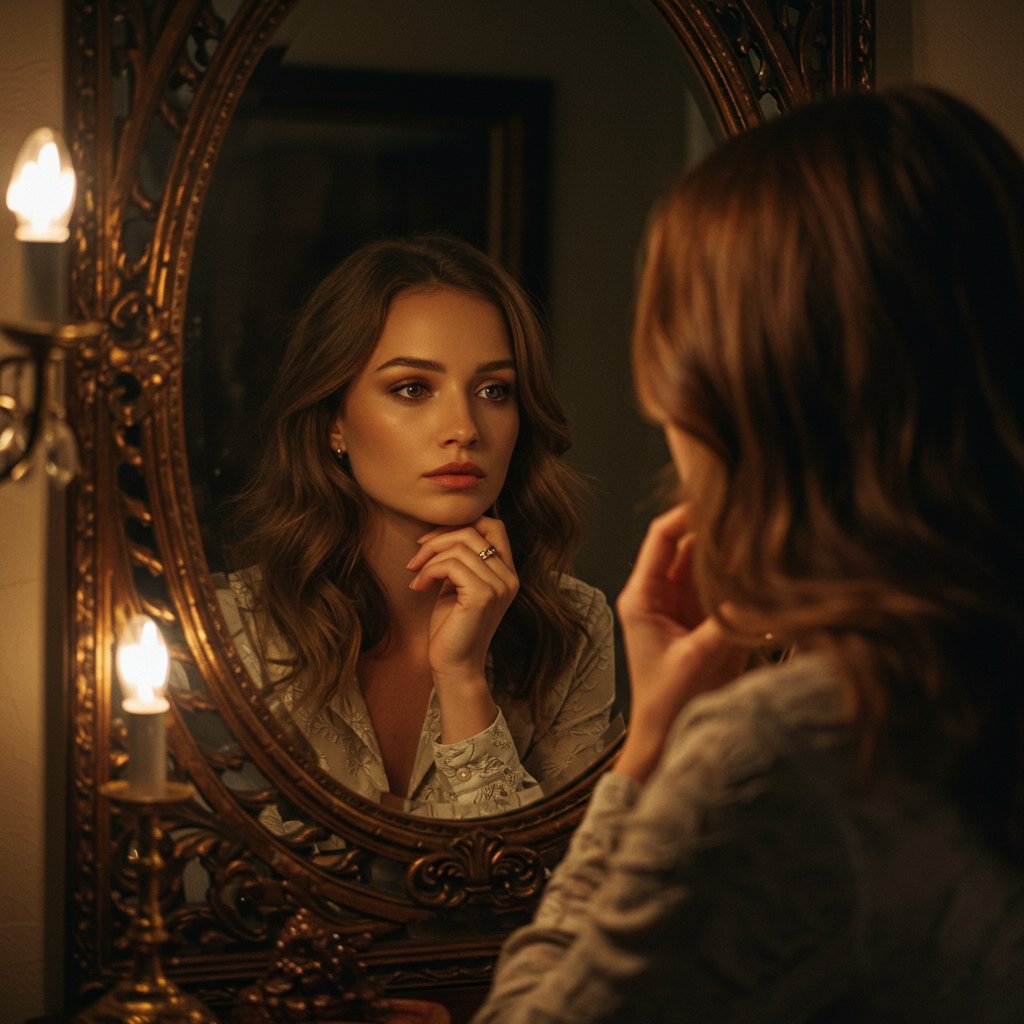
Choosing a haircut is a deeply personal decision, but it's also a science of angles, lines, and proportions. A style that adds volume in the right places can soften a sharp jawline, while a cut that creates length can elongate a rounder face. It’s all about creating an illusion of balance and symmetry. By learning the principles of facial harmony, you can move beyond simply copying a celebrity's look and instead find a signature style that is authentically and beautifully you. Let’s decode the process, from identifying your face shape to exploring the most flattering cuts for every type.
First Things First: How to Determine Your Face Shape
Before you can find the ideal hairstyle, you need to identify your canvas. Determining your face shape is a simple process you can do at home. There are two popular methods: the tracing method and the measurement method. For the most accurate result, pull your hair back completely so your entire face outline is visible.
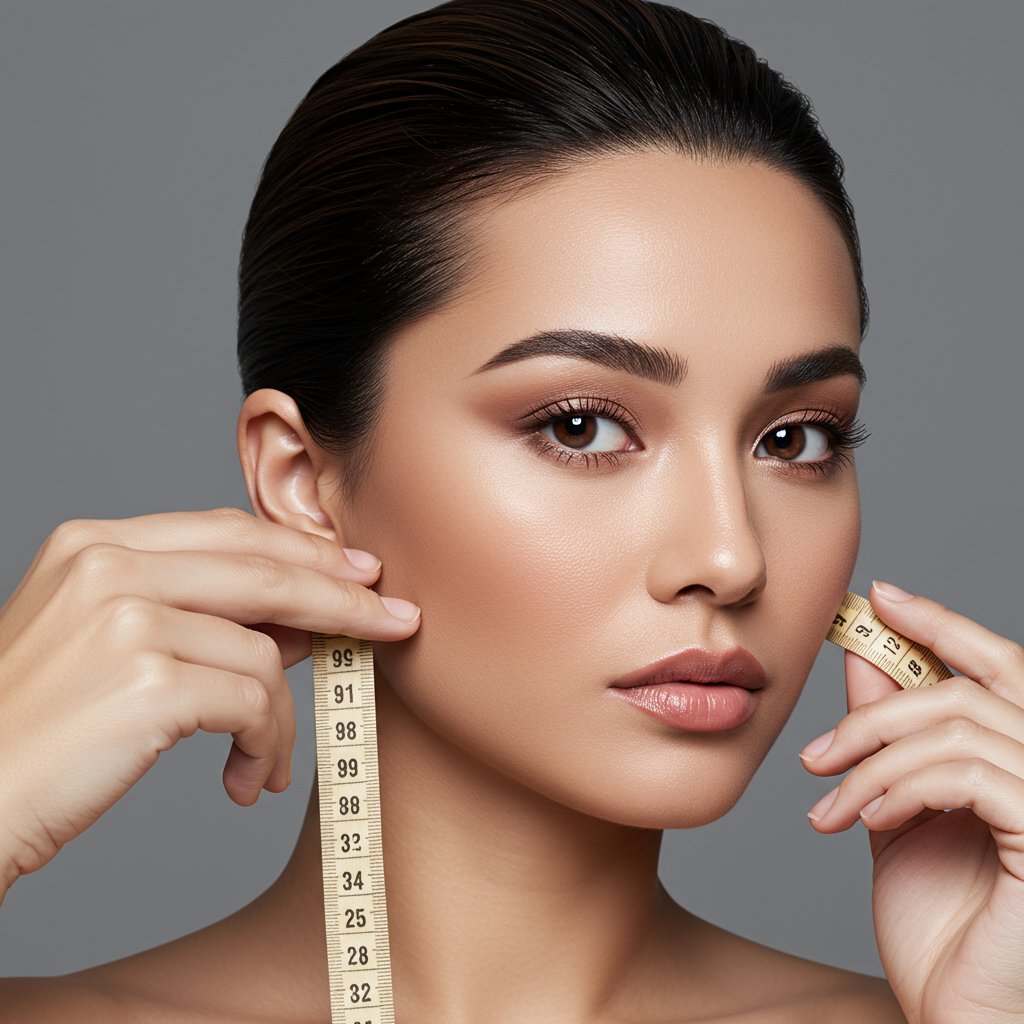
The Tracing Method
Stand in front of a mirror. Using a dry-erase marker, a bar of soap, or an old lipstick, carefully trace the outline of your face directly onto the mirror's surface. Start from your chin, move up along your jawline and cheekbones, around your hairline, and back down the other side. Step back and look at the shape you've drawn. Does it look more like a circle, a square, an oval, or a heart? This visual outline is often the quickest way to get a clear answer.The Measurement Method
For a more precise approach, grab a flexible measuring tape. Write down the following measurements:- Forehead: Measure the widest part of your forehead, typically halfway between your eyebrows and your hairline.
- Cheekbones: Find the widest point of your cheekbones, usually just below the outer corners of your eyes, and measure from one side to the other.
- Jawline: Measure from the tip of your chin to the point below your ear where your jaw angles upward. Multiply that number by two.
- Face Length: Measure from the center of your hairline straight down to the tip of your chin.
- Oval: Face length is greater than the width of the cheekbones, and the forehead is wider than the jawline. The jaw is softly rounded.
- Round: Cheekbones and face length have a similar measurement. The face is nearly as wide as it is long with a soft jawline.
- Square: All measurements are fairly similar. The jawline is sharp and angular.
- Heart: Wide forehead and cheekbones with a narrow jawline and a pointed chin.
- Diamond: The cheekbones are the widest part of the face, with a narrower forehead and jawline.
- Long (Oblong): Face length is noticeably greater than the width. Forehead, cheekbones, and jawline are similar in width.
The Best Hairstyles for an Oval Face Shape
Considered the 'ideal' face shape due to its balanced proportions, the oval face is incredibly versatile. The face is longer than it is wide, with a softly curved jawline and a forehead that is slightly wider than the chin. This symmetry means that almost any hairstyle will look flattering, so you have the freedom to experiment with trends and lengths.
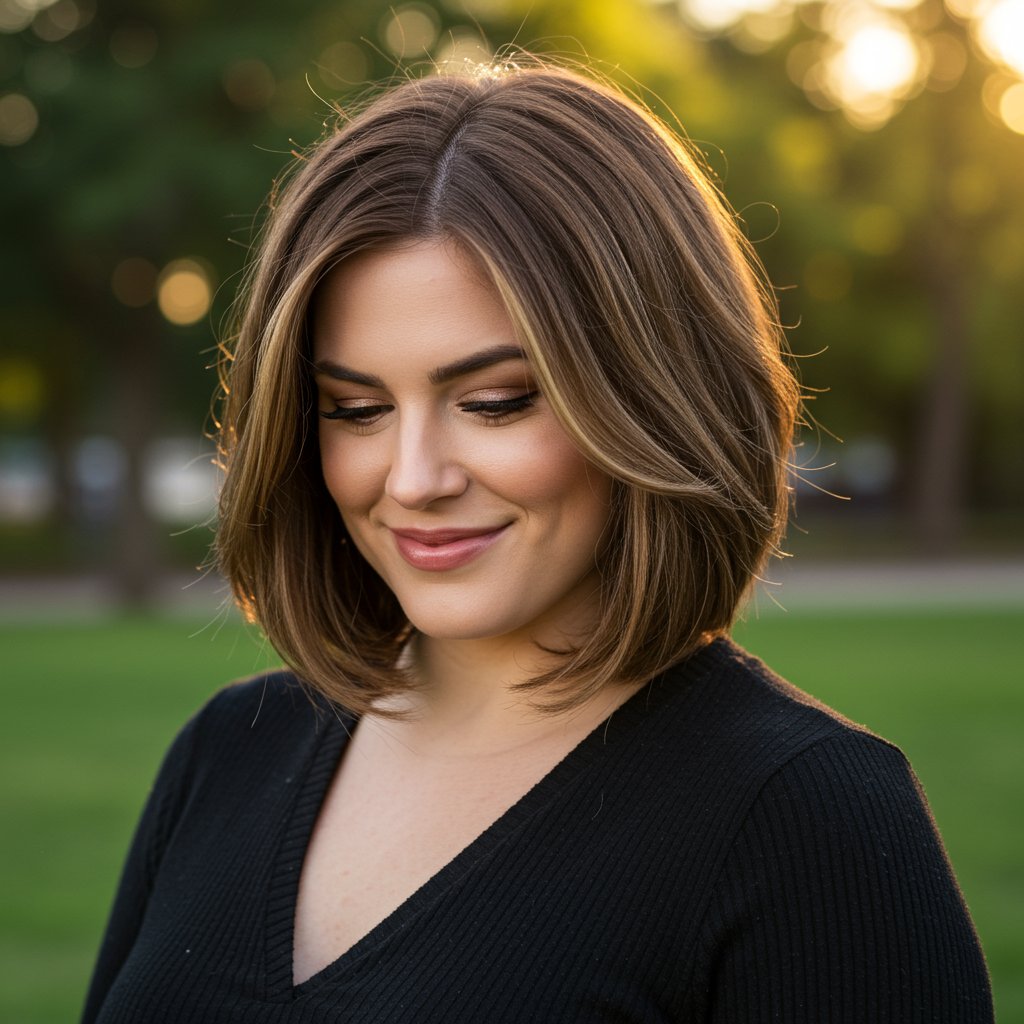
For those with an oval face, the goal isn't to correct or balance, but simply to avoid styles that might throw off your natural proportions. While you can pull off most looks, try to avoid heavy, straight-across bangs or styles with too much volume on top, as they can make an oval face appear slightly longer. Instead, opt for styles that keep the hair off your face to showcase your balanced features. Long, flowing layers, a chic shoulder-length cut, a blunt bob, or even a daring pixie cut all work beautifully.
Flattering Styles to Consider:
- Shoulder-Length Layers: Soft, face-framing layers add movement and prevent the hair from dragging your features down.
- Blunt Bob: A bob that ends at or just below the chin highlights the elegant jawline without adding unnecessary width.
- Side-Swept Bangs: These draw attention to the eyes and cheekbones without creating a harsh horizontal line.
Flattering Haircuts for a Round Face Shape
A round face is characterized by a similar width and length, with full cheeks and a rounded, soft jawline. The primary goal for a hairstyle is to add length and create the illusion of sharper angles, effectively slimming and elongating the face. The key is to build height at the crown and keep the sides leaner.

Avoid styles that add width at the cheekbone level, such as chin-length bobs with rounded edges or short, curly styles that expand horizontally. Similarly, heavy, blunt bangs can make the face appear shorter and wider. Instead, focus on styles that create vertical lines. Long layers that fall below the chin, a deep side part, and asymmetrical cuts are all fantastic choices. These styles draw the eye downward, making the face appear more oval-like.
Flattering Styles to Consider:
- Long Bob (Lob): A lob that ends a few inches below the chin is incredibly flattering, as it elongates the face.
- Asymmetrical Pixie: A pixie cut with longer pieces in the front and volume on top adds height and creates angular interest.
- Deep Side Part: This simple trick breaks up the roundness and creates a more angular, slimming effect.
- Long, Loose Waves: Waves that start below the chin add texture and length without adding width to the cheeks.
Chic Styles for a Square Face Shape
The hallmark of a square face is a strong, angular jawline and a forehead, cheekbones, and jaw that are all roughly the same width. It's a powerful and striking face shape. The goal for a hairstyle is to soften these strong angles and add a touch of roundness to the overall silhouette.

Texture is your best friend. Curls, waves, and wispy layers work wonders to soften the sharp lines of the jaw and temples. Avoid styles that are equally angular, such as a sharp, geometric bob or heavy, blunt bangs, as they will only emphasize the squareness. A center part can also be harsh, so opting for a side part or an off-center part is generally more flattering.
Flattering Styles to Consider:
- Wavy Lob or Shoulder-Length Cut: Soft waves and curls beautifully contrast the sharp angles of the jawline.
- Long Layers: Layers that start around the chin and continue downward help to soften the corners of the face.
- Side-Swept or Curtain Bangs: These bangs create a soft, diagonal line that breaks up the squareness of the forehead and draws attention to the eyes.
The Perfect Haircuts for a Heart Face Shape
A heart-shaped face is wider at the forehead and cheekbones and tapers down to a narrower, often pointed, chin. The styling objective is to create balance by adding volume to the lower half of the face while minimizing the width of the forehead. You want to draw attention downward, towards the eyes, mouth, and chin.
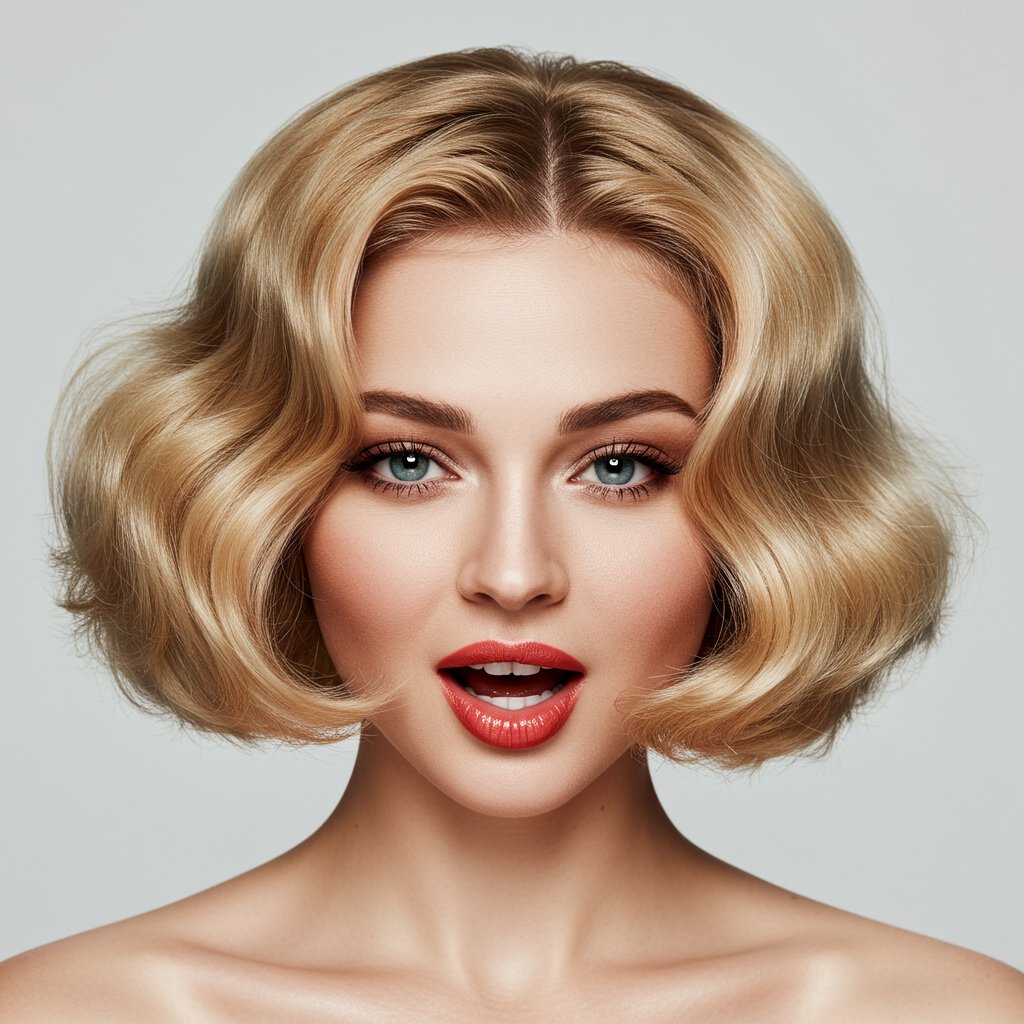
Hairstyles that are fuller around the jawline work beautifully. Think shoulder-length cuts, bobs, and lobs. A deep side part is an excellent choice as it sweeps across the forehead, breaking up its width. While you can wear bangs, opt for wispy, side-swept styles rather than full, blunt ones. Avoid styles with too much height or volume at the crown, as this can make the forehead appear even wider.
Flattering Styles to Consider:
- Shoulder-Length Lob: A cut that ends at or just below the shoulders adds much-needed volume around the narrower part of the face.
- Deep Side Part with Waves: This combination softens the forehead and adds fullness to the lower half of the face.
- Bouncy Bob: A chin-length or slightly longer bob with layers and texture fills out the area around the chin perfectly.
Striking Hairstyles for a Diamond Face Shape
The diamond face shape is the rarest. It's defined by wide, high cheekbones, with a narrower forehead and jawline that are approximately equal in width. The goal is to soften the cheekbones and create more fullness around the chin and forehead to achieve a more balanced, oval-like silhouette.
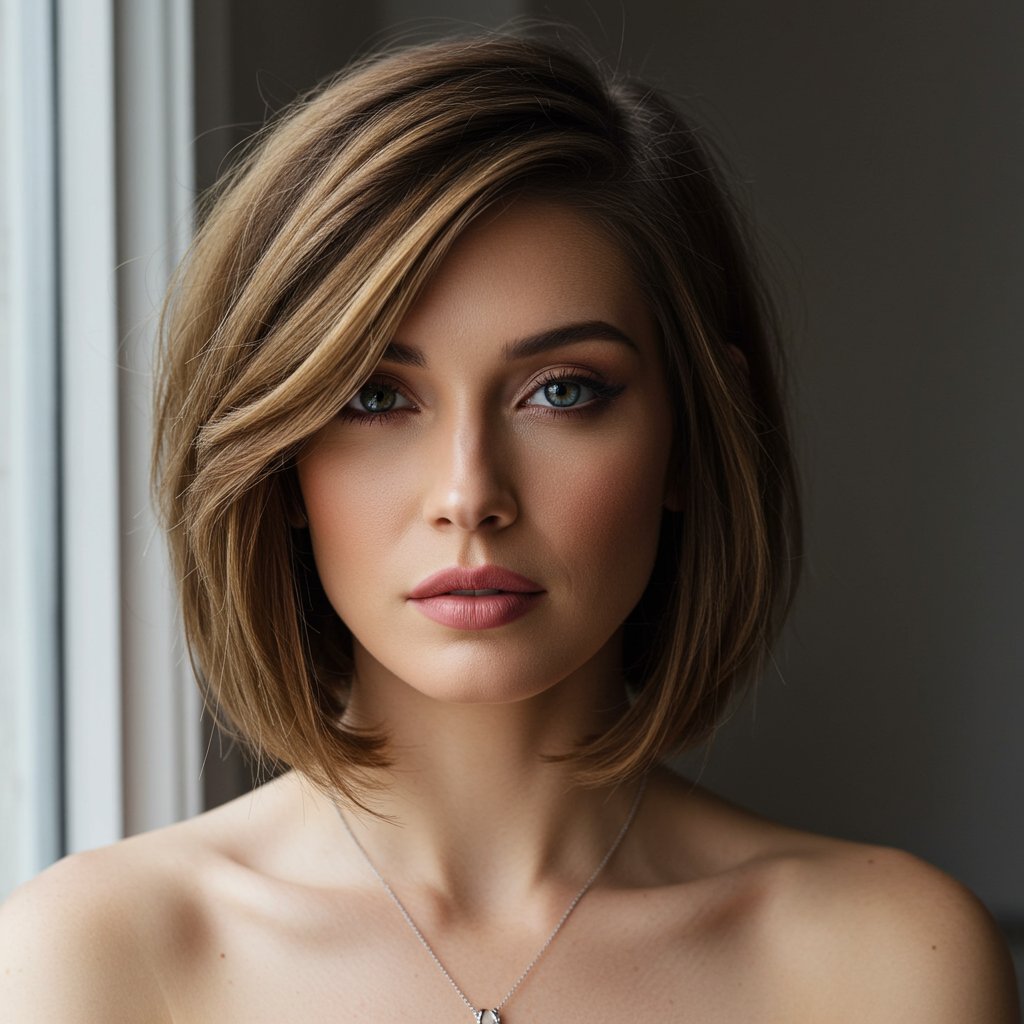
Hairstyles that add width at the chin, like a chin-length bob or a shoulder-length cut with layers, are very flattering. Softer, face-framing layers can help soften the prominent cheekbones. A side part works well to soften the angles of the face. Many people with diamond faces look fantastic with hairstyles that can be tucked behind one ear, as this shows off the stunning cheekbone structure without overwhelming the face.
Flattering Styles to Consider:
- Medium-Length Cut with Layers: Layers that fall around the chin will add fullness where it's needed most.
- Chin-Length Bob: A classic bob that ends at the chin helps to widen the appearance of the jawline.
- Pulled-Back Styles: Ponytails or updos that are not slicked back too tightly can beautifully showcase the cheekbones while maintaining softness.
Beyond the Shape: Other Factors to Consider
While your face shape is a foundational guide, it's not the only piece of the puzzle. To find your truly perfect hairstyle, you must also consider your hair's texture, your lifestyle, and the level of maintenance you're willing to commit to. A great stylist will consider all these elements during a consultation.
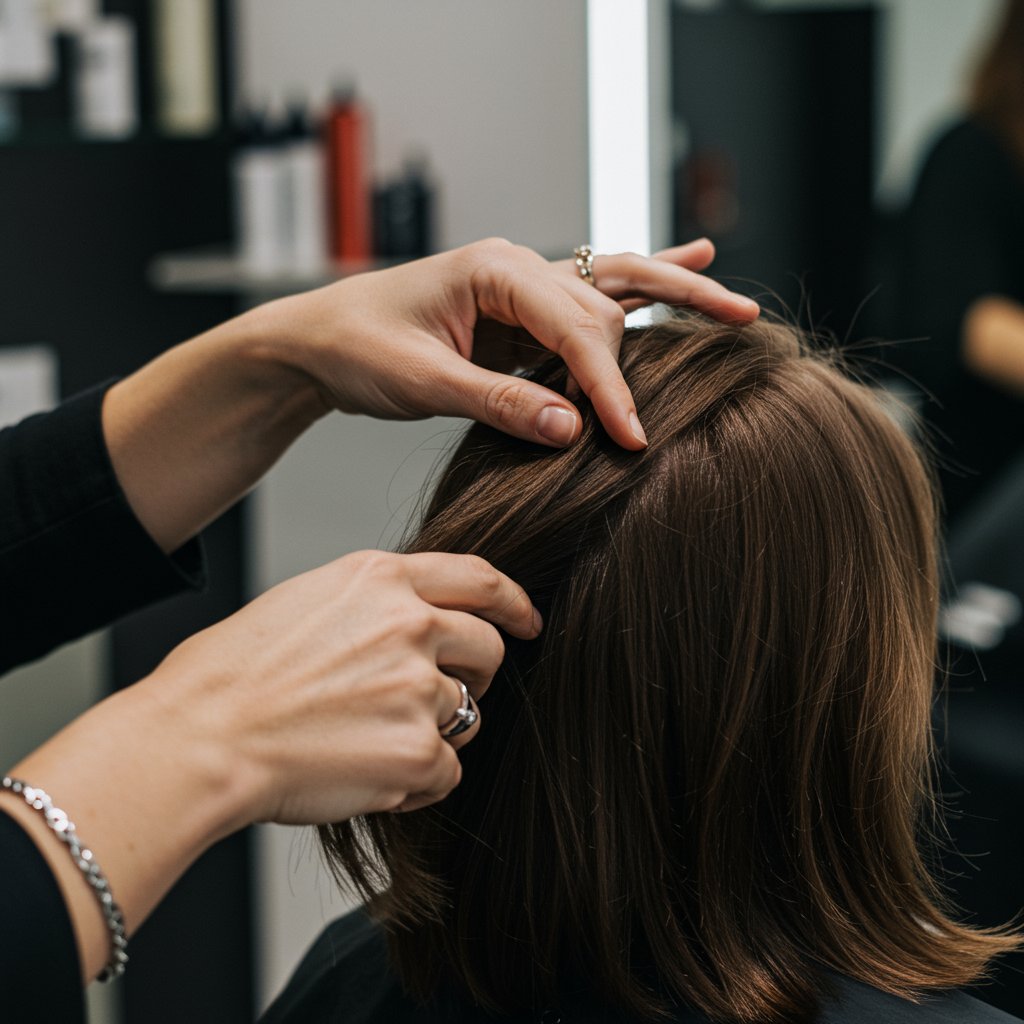
Hair Texture and Density
- Fine Hair: Fine hair can fall flat. Styles like a blunt bob or a layered pixie can create the illusion of more volume. Avoid overly long styles that can weigh the hair down.
- Thick Hair: Thick hair can handle thinning and texturizing. Long layers are excellent for removing bulk and adding movement. Be cautious with short, one-length cuts that can look boxy.
- Curly/Wavy Hair: Embrace your natural texture! The right cut will enhance your curl pattern. Look for stylists who specialize in curly hair and can perform a dry cut to shape your curls properly.
Lifestyle and Maintenance
Be realistic about how much time you want to spend on your hair each day. If you're a low-maintenance person, a haircut that requires 30 minutes of heat styling every morning is not for you. Discuss your daily routine with your stylist. They can recommend styles that fit your schedule, whether it's a wash-and-go look or something that requires more upkeep.
Frequently Asked Questions (FAQ)
1. Can I have bangs if I have a round or square face? Absolutely! The key is choosing the right type of bangs. For round faces, wispy, side-swept bangs or curtain bangs that are shorter in the middle and longer on the sides can be very flattering as they create angles. For square faces, soft, layered bangs or curtain bangs help soften the strong jawline. Avoid heavy, blunt, straight-across bangs for both shapes.
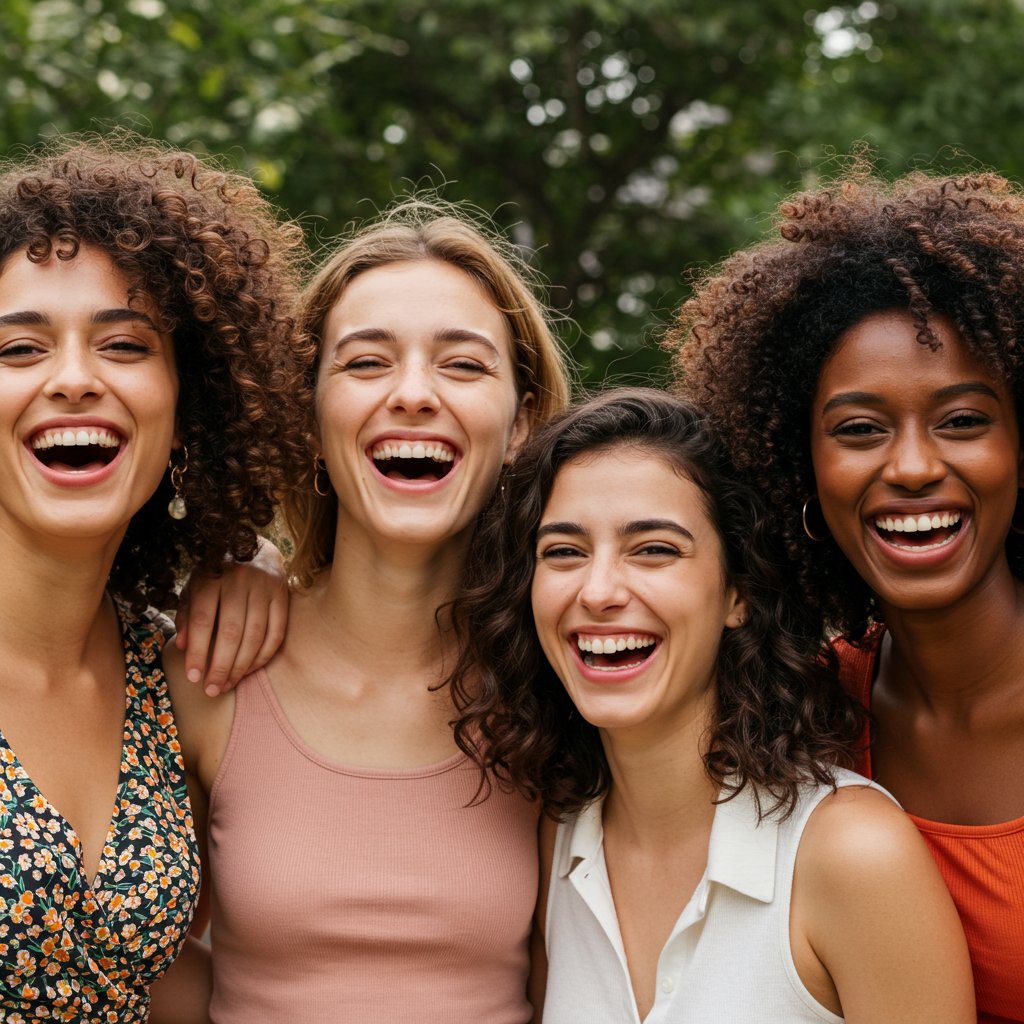
2. Does my hair texture matter more than my face shape? They are equally important and work together. A style recommended for your face shape might need to be adapted for your hair texture. For example, a layered shag is great for a square face, but how those layers are cut will differ drastically for someone with fine, straight hair versus someone with thick, curly hair. A professional stylist can harmonize both factors.
3. I feel like I'm between two face shapes. What should I do? This is very common! Few people fit perfectly into one category. If you're a mix—say, a square-oval or a heart-long—focus on your most dominant feature. If you have a strong jawline (square) but your face is also long, choose styles that soften the jaw and add some width, like a wavy, shoulder-length cut.
4. How often should I get my haircut to maintain the shape? This depends on the style. Short haircuts like pixie cuts require trims every 4-6 weeks to keep their shape. Medium-length styles and bobs typically need maintenance every 6-8 weeks. Long, layered hair can often go 8-12 weeks between cuts.
5. Should I bring pictures to my stylist? Yes, please do! Pictures are an invaluable communication tool. Bring 2-3 images of styles you like and be prepared to discuss what you like about them—the texture, the length, the bangs. Also, bring a picture of a style you don't like, as this can be just as helpful for your stylist.
Conclusion: Embrace Your Unique Beauty
Finding the perfect hairstyle for your face shape is a journey of self-discovery. It's about learning to work with your natural features to create a look that is both flattering and an authentic expression of your personality. While these guidelines provide a fantastic starting point, remember that they are not rigid rules. The most important thing is that you love your hair and feel confident in your own skin.
Use this knowledge as a tool to have a more informed conversation with a professional. An experienced stylist can provide a personalized consultation, taking into account your face shape, hair texture, and lifestyle to create a bespoke cut that's perfect for you. Armed with this guide, you’re ready to make your next haircut your best one yet.


